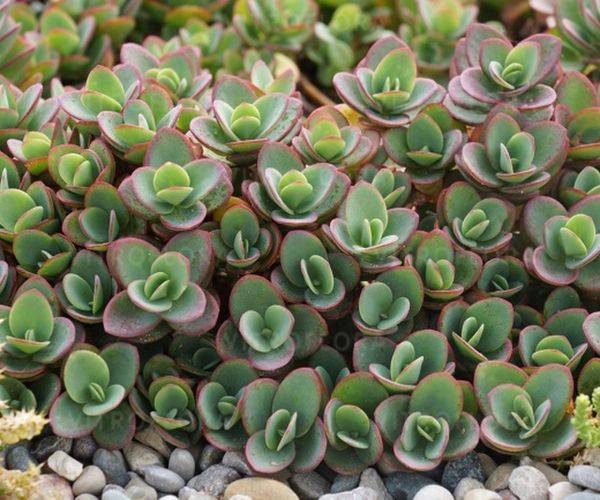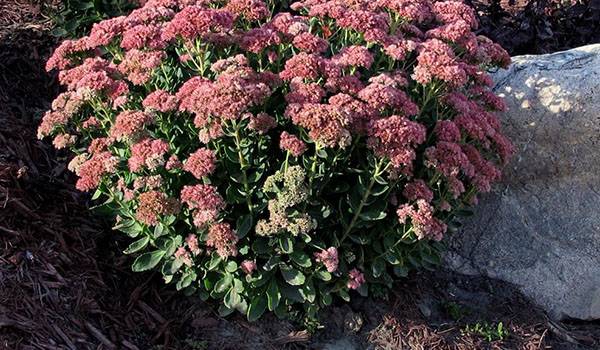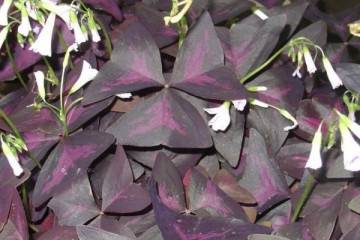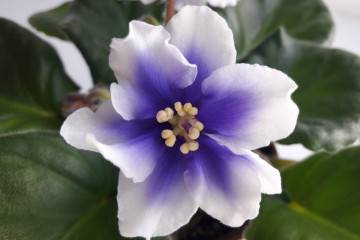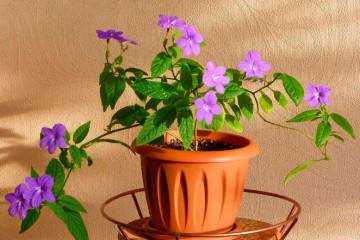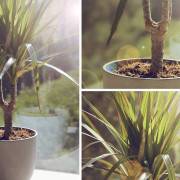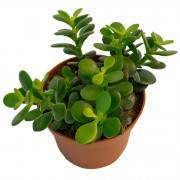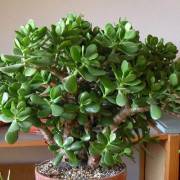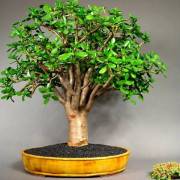Sedum (sedum) home - description of the plant
Content:
- Sedum (sedum) home - what kind of plant is it
- Sedum: types, varieties and varieties of a flower
- Sedum: planting and caring for it in the open field
- How to grow a flower at home
- Flowering period, when and how it happens
- Sedum sedum: reproduction in the garden and at home
- Growing problems, diseases and pests
The many-sided ornamental and medicinal plants include sedum (sedum). Succulent has many varieties, it can grow in the form of a bush or creeping carpet, its features are used in landscape design. A flower with thick and fleshy leaves is also grown at home.
Sedum (sedum) home - what kind of plant is it
Sedum flowers belong to the Tolstyankovy family, in nature they prefer arid terrain. Distributed in the African and South American continent, European, Russian and Caucasian territories.
Depending on the variety, the plant is biennial or perennial, thermophilic, winter-hardy or ground cover (hybrid sedum).
Dense shoots are prone to branching, forming a shrub or semi-shrub, many types are ampelous. The leaves do not have petioles, they are dense, swollen, oval and fleshy. Located opposite each other.
Medicinal properties
The medicinal qualities of the plant are associated with the component composition, which include:
- alkaloids;
- tannins;
- glycosides;
- flavonoids;
- organic acids;
- ascorbic acid.
Sedum: types, varieties and varieties of a flower
In this genus of succulents, according to various sources, there are more than 390 species and almost 500 varieties. But only a small number of them are grown for decorative purposes.
Sedum large (Sedum telephium)
Reaches 25-30 cm in height, differs in thick and erect shoots, oval, flat leaves. In nature, it prefers a temperate climate, belongs to medicinal options with a strengthening and tonic effect.
This plant species of the Sedum genus has several subspecies, which are represented:
- ordinary legumes - with burgundy flowers;
- an ordinary large one - with a whitish-greenish or whitish-yellowish tint of the petals;
- ordinary ordinary (the name is correct, despite the obvious tautology) - the differences are in the form of leaf plates tapering towards the base.
White sedum (Sedum album), or soap dish
The sedum has white small foliage and green stems, it grows in a dense carpet.
The soap box includes:
- forming a creeping canvas, reminiscent of the white moss Coral Carpet;
- Hillebrandt - the plant is covered with orange flowers in the summer months, and pink in winter.
Sedum acre
It grows up to 5 cm, has dark green, thick leaves and petals that resemble golden stars.The poisonous plant is winter-hardy, not afraid of drought, blooms from spring to early September.
Varieties of caustic sedum are presented:
- Elegans - with coral, slightly twisted foliage;
- Sedum Aurem - with yellow stems in the upper part;
- Blue Forest - with yellow and globular inflorescences.
False sedum (Sedum spurium)
It grows like a carpet, is not afraid of cold weather, it is stunted. Oval green foliage changes color to purple or bronze after frost. Purple-tinged inflorescences adorn the garden from July to August. The sedum spurium is represented by the following species:
- Sedum Voodoo - with pink buds, dark red foliage and olive trunks;
- Crimson - with dark red flowers and golden stems;
- Rubens Lizard - greenish-pinkish leaves and flowers.
Sedum prominent (Hylotelephium spectabile), or sedum prominent
A plant with an erect stem, grayish, bluish or light green leaves. Buds of different pink shades appear from August to October. Such sedum is presented:
- Karl - with lilac or purple petals and bluish foliage;
- Diamond - with elliptical bluish foliage, pink at the edges and with the color of the function in the center of the buds;
- Neon - the species has gray leaves and pink inflorescences.
Sedum burrito
Indoor varieties include burrito sedums. Plants have long shoots that branch out at the base. The light green foliage is covered with a waxy bloom of blue, it is thick and small in size. After warming, inflorescences with pink buds form at the top of the stems.
Sedum: planting and caring for it in the open field
The sedum prefers open places with free access to the sun. It should not be planted in the ground with nearby groundwater and under deciduous trees.
When disembarking, landing rules
Growing requires adherence to certain rules. Before planting, digging the soil is carried out with the introduction of compost or humus. The plant is planted in spring - in May, according to the scheme:
- each instance requires a hole - 20 cm deep and 50 cm wide;
- the bottom of the holes is covered with pebbles or coarse river sand - drainage;
- a mixture of peat and humus is poured on top, in the calculation of 3 to 1;
- a recess is made in the hole, designed for the root system of the seedling;
- after placing it, the voids are covered with earth and carefully tamped.
Preparing the plant for winter
Outdoor sedum care requires shelter for most species, especially when landing in most regions of Russia.
After the first frost, the bushes are cut to 4 cm from the base, covered with non-woven material, and sprinkled with earth.
How to grow a flower at home
For the home, choose pots with low walls, wide. Each must have drainage holes.
Illumination and temperature conditions
The temperature depends on the season:
- for summer - from 25 to 28 degrees;
- for winter - from 8 to 12 degrees.
In the summer months, sedum needs a bright sun, it is placed on the south side. In winter, use additional lighting.
Watering rules and humidity
The plant is watered weekly in summer, in autumn and winter, the frequency is reduced by 2 times.
Spraying is not required, sometimes a warm shower is carried out.
Top dressing and soil quality
For normal growth, the plant requires a special mixture for cacti.
But if you wish, you can make the soil yourself by mixing sand, turf and leafy soil in equal parts.
The bottom of the container is drained, fertilizers are applied from March to August, after September the plant does not need feeding.
Flowering period, when and how it happens
Each plant has its own budding time.
Most bloom in July-August, some species begin from the first days of summer - stonecrop (sedum of vinca or spirium) and deflected. Prominent sedum pleases with flowers in September-November.
Sedum sedum: reproduction in the garden and at home
Reproduction of sedum is carried out using:
- Seeds - purchased or self-collected, always fresh. Sowed from March to April in containers filled with compost, sand and earth in equal proportions. The soil is pre-moistened, after planting, they create a greenhouse effect using a plastic film. They are sent to a room with a temperature of 5 degrees, periodically ventilated and watered. After 2 weeks, the pots are transferred to a room with a temperature of 20 degrees - the sprouts should appear in 7-14 days. After the formation of two sheets, seating and hardening are carried out. Planting work is carried out after the end of frost, the first flowering is expected for 2-3 years.
- Cuttings - they are cut from the upper sections of the stems 15 cm long. The lower foliage is removed, and the trimmings are dropped into the pre-moistened ground. After 48 hours, watered, after the formation of the roots (2-3 weeks), a transplant is carried out.
Stonecrop can also multiply by division - adult bushes, not less than 4 years old, are dug up. After clearing from the ground, pruning of diseased or rotten stems and roots is carried out. Divided into several parts, each should have kidneys. Sections are dried, sprinkled with activated carbon powder and planted after 2 days.
How to transplant
Transplantation of outdoor plants is carried out after 5 years. After digging, they cut off all problem areas, divide the bush and then plant it.
Apartment varieties move every 2 years (young) or 3-4 years (mature and overgrown plants). The transplant is carried out with utmost care - the foliage easily breaks off the stonecrop.
A shallow container is chosen, expanded clay is poured onto its bottom, a mixture of equal parts of leaf, sod land and sand is on top. Small pieces of broken brick and charcoal are added to the soil mixture. Later, you need to take care of the flower according to the standard scheme.
Growing problems, diseases and pests
The defeat of stonecrop by pests and diseases occurs rarely, with a disturbed temperature regime and high humidity. Common problems include:
- fungal infections - with the appearance of dark spots, the affected areas must be removed, the plant must be treated with a fungicide;
- thrips - determined by fallen leaves, black dots and sticky secretions, treatment consists in using Fitoverm, Actellik;
- aphids - manifested by drying and twisted foliage, on which green insects are located, they are destroyed by Spark, Confidor;
- weevil - gnawed areas are visible on the leaves, the pest is afraid of Karbofos.
Inexperienced growers can use a ready-made description of all types of care work. Compliance with the rules will help to grow beautiful and healthy plants, prevent common diseases, decorate an apartment or a backyard with an unusual perennial.
